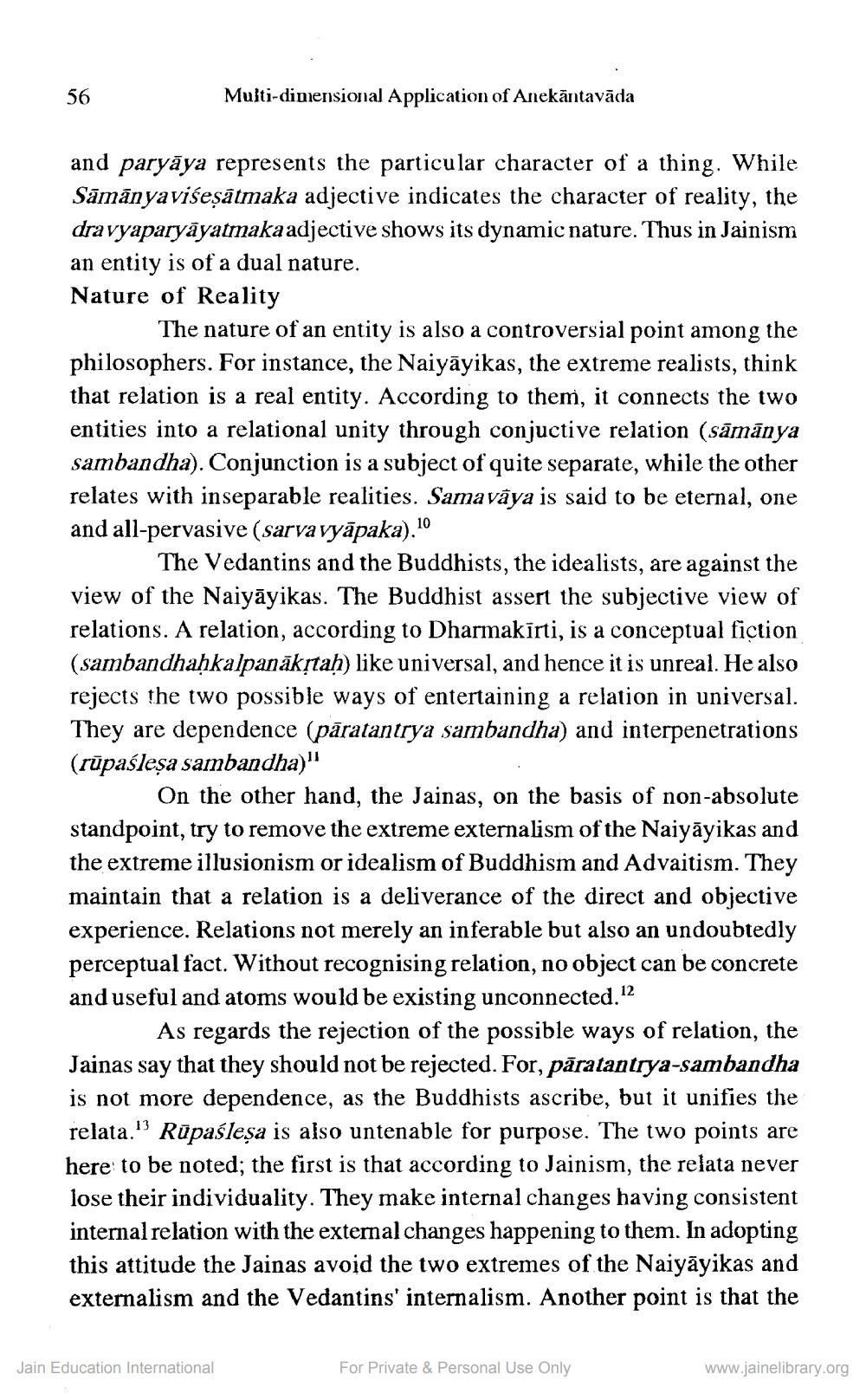________________
56
Multi-dimensional Application of Anekāntavāda
and paryaya represents the particular character of a thing. While Sāmānyaviseṣātmaka adjective indicates the character of reality, the dravyaparyayatmaka adjective shows its dynamic nature. Thus in Jainism an entity is of a dual nature.
Nature of Reality
The nature of an entity is also a controversial point among the philosophers. For instance, the Naiyāyikas, the extreme realists, think that relation is a real entity. According to them, it connects the two entities into a relational unity through conjuctive relation (samānya sambandha). Conjunction is a subject of quite separate, while the other relates with inseparable realities. Samavaya is said to be eternal, one and all-pervasive (sarva vyāpaka).10
The Vedantins and the Buddhists, the idealists, are against the view of the Naiyāyikas. The Buddhist assert the subjective view of relations. A relation, according to Dharmakirti, is a conceptual fiction (sambandhaḥkalpanākṛtaḥ) like universal, and hence it is unreal. He also rejects the two possible ways of entertaining a relation in universal. They are dependence (pāratantrya sambandha) and interpenetrations (rūpaśleṣa sambandha)"
On the other hand, the Jainas, on the basis of non-absolute standpoint, try to remove the extreme externalism of the Naiyāyikas and the extreme illusionism or idealism of Buddhism and Advaitism. They maintain that a relation is a deliverance of the direct and objective experience. Relations not merely an inferable but also an undoubtedly perceptual fact. Without recognising relation, no object can be concrete and useful and atoms would be existing unconnected.12
As regards the rejection of the possible ways of relation, the Jainas say that they should not be rejected. For, pāratantrya-sambandha is not more dependence, as the Buddhists ascribe, but it unifies the relata. Rūpaśleșa is also untenable for purpose. The two points are here to be noted; the first is that according to Jainism, the relata never lose their individuality. They make internal changes having consistent internal relation with the external changes happening to them. In adopting this attitude the Jainas avoid the two extremes of the Naiyāyikas and externalism and the Vedantins' internalism. Another point is that the
Jain Education International
For Private & Personal Use Only
www.jainelibrary.org




